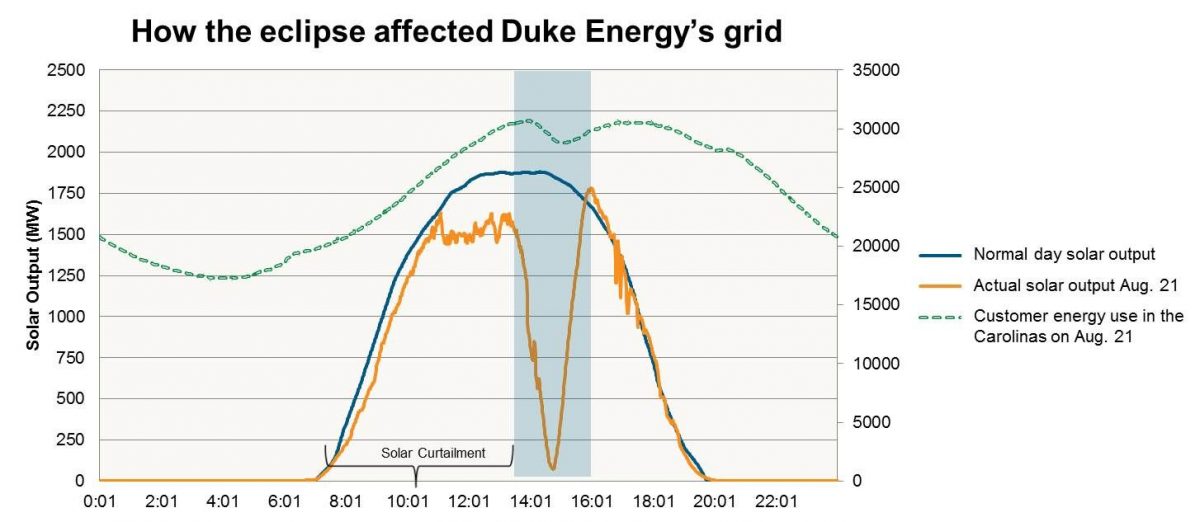
For the most part, everything went as expected during the eclipse Monday, when the moon created a dusk-like darkness over North Carolina’s solar panels, according to an article in Illumination, a publication by Duke Energy.
Originally, Duke Energy estimated production would drop from about 2,500 megawatts to 200 megawatts in 90 minutes, but because of clouds, it is estimated that solar output would have dropped from about 1,808 megawatts to 109 megawatts at the height of the eclipse without manual adjustments to the solar output.
Supporter Spotlight
As planned, flexible fuel sources like natural gas plants were used to fill the void, according to the utility.
Surprisingly, rather than seeing a increase in energy demand as streetlights switched on, Duke Energy’s grid saw a reduction in energy use as millions ran outside to catch a glimpse of the stunning phenomenon. Energy use dropped about 1,770 megawatts just before the eclipse as shown by the green line on the graph below.
The Aug. 21 eclipse was a first-of-its-kind in the solar energy industry. The last total solar eclipse in the United States was in 1991, before solar energy was an integral part of the nation’s energy portfolio. Solar installations have grown by an average of 68 percent each year, according to the Solar Energy Industries Association, in the last decade alone.






